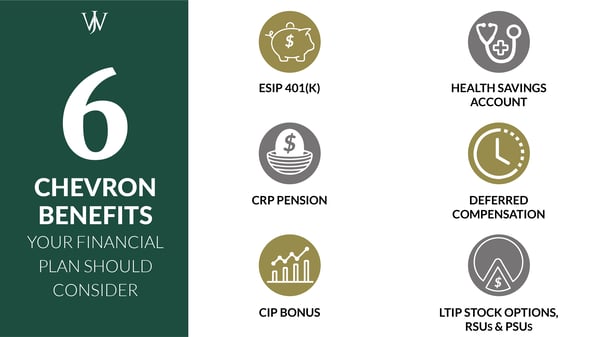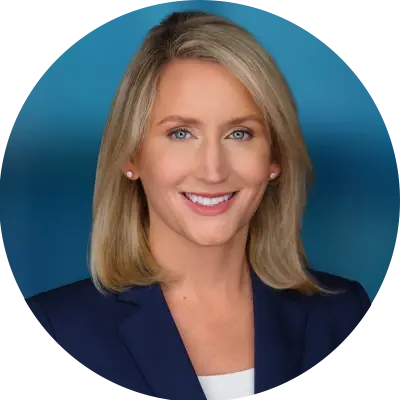While you’ve worked to build a nest egg over your entire career, Chevron professionals’ finances often get more complicated in the 1-3 years leading up to and following retirement. After a long career at Chevron, several important decisions about your benefits, savings, and investments impact what’s available to you in your golden years and your resulting tax burden. When working at Chevron, you can access some of the best company benefit plans available in the US. Therefore, it’s essential to leverage them properly to retire confidently.
How Much Do I Need to Retire from Chevron?
One of the most common questions we see from Chevron professionals nearing retirement is, “how much do I need to save to enjoy retirement?” Like many things in life, the answer depends on several variables and differs from person to person.
Many of your peers may have similar Chevron benefits to you. But, your other retirement accounts, investment asset allocation, and goals for how you wish to spend your retirement may differ vastly. For example, a standard recommendation from other advisors is to save enough and plan to withdraw and live upon approximately 4% each year. However, we believe that a customized financial plan considering both what you’ve saved and what you want for your future is more effective in enjoying your financial independence.
3 Most Common Chevron Retirement Pitfalls
The amount you save for retirement is only one factor in achieving financial independence. The decisions you make in the years leading up to retirement can substantially impact your taxes throughout your golden years and may have a direct impact on the financial opportunities that continue to be available or unavailable to you.

1) Underutilizing Chevron Benefits
Chevron was one of the largest oil companies in the US and was #22 on Fortune's Global Top 2000 list for 2024. As a result, the employee benefits at Chevron are one of your most significant and often most substantial assets. Therefore, making the most of these plans while you are still working is crucial.
Are you Maxing out the Chevron ESIP 401(K)?
Chevron provides its employees with a 401(k) plan, the Employee Savings Investment Plan (ESIP). The company offers a generous 401(k) match, up to 8% of compensation, or 4% for every 1% an employee contributes to the basic source. Chevron employees should contribute enough to their 401(k) to receive the match, but ideally, they would contribute the maximum allowed contribution to a 401(k).
Learn how to max out the Chevron 401(k) this year here >>
Did you Get the Tax Benefits of an HSA?
One of the benefits many Chevron professionals fail to take full advantage of is the Health Savings Account, known as an HSA. Chevron employees who participate in a high-deductible health plan can choose to contribute to an HSA. The HSA allows for pre-tax contributions from payroll, avoiding federal, Social Security, and Medicare taxes. These HSA funds grow tax-deferred and can be withdrawn tax-free for qualified medical expenses.
That is a triple-tax deferral!
To use this benefit to its fullest, you can invest HSA funds for long-term growth, and upon reaching age 65, use the account like an IRA. Then, you can take withdrawals for any expenses (including medical ones) without a penalty and pay income taxes on only the withdrawals.
How Did You Invest Your Company Stock Compensation?
We often see many Chevron employees with significant funds invested in Chevron stock within their ESIP. Many received company stock as part of an Employee Stock Ownership Plan (ESOP stock) from prior years or company stock received as part of their long-term incentive plans (LTIPs) in a compensation package. Typically, we discuss overconcentration risks and diversification strategies with professionals with substantial company stock in their portfolios.
Consider this, the S&P 500 index fell about 25% in March 2020 and was back to pre-pandemic levels by August. By contrast, Chevron stock fell over 50% and didn’t reach pre-pandemic levels until 2022. While the large-cap market fell as a whole, it was not as severe of a drop as an individual stock and rebounded much faster. There can be tremendous value in diversification across companies and asset classes, both during a market downturn and a market run. As a Chevron employee, it is worth considering all options available in the ESIP and whether your portfolio needs additional diversification.
Does it make sense to diversify when energy is outperforming the S&P 500?
Learn more here >>

2) Failing to consider taxes
Often, Chevron professionals’ year of retirement is their highest income year. Between salary, severance payouts, receiving the pension as a lump sum, and other benefit payouts, you could unintentionally launch yourself into the highest tax brackets without proper planning.
Suppose you’re offered a severance package and have the opportunity to choose your separation date. In that case, you could separate later in the year to push your payout into the year following retirement. Doing so spreads your income over two years and can minimize your tax burden so you can keep more of the funds. So, before accepting a severance package from Chevron, ensure you’re not leaving any money on the table.
Access our Chevron Severance Checklist Here >>
3) Taking the Pension Lump Sum at the Wrong Time
Did you know that you do not have to take the Chevron pension immediately after retiring? Chevron calculates your pension using a formula and IRS published segment rates in effect when you elect to commence your benefit, not the month you retire.
Segment rates are constantly changing, so watching the rate’s trend can be advantageous in determining the best time to take your pension for the most significant payout.

For example, if rates are trending down, waiting a few months to elect to start your pension can potentially add hundreds of thousands of dollars to the benefit. Conversely, if interest and segment rates begin to rise, choosing to receive your pension earlier may be a better option. Depending on your pension numbers, the changes in interest rates may significantly impact the lump sum value you receive in retirement and could affect your overall retirement planning.
Partner with a Financial Advisor with Chevron Benefit Experience to Avoid These Mistakes
You’ve worked for years to save what you have, and your retirement shouldn’t add more work to your plate. Unfortunately, many financial advisors don’t have experience navigating Chevron’s unique benefit plans and how each benefit impacts one another. As a fee-only firm, we focus on providing comprehensive advice in your best interest.
Our team of Chevron-focused advisors understands the complex intricacies of your benefits and can help you retire with confidence without leaving money behind. Connect with us to see the WJA difference and start your journey to financial freedom with the peace of mind you deserve.
These are only 3 of the 6 significant pitfalls we see from Chevron professionals looking to retire.
Download the complete E-Book by filling out the form below.







